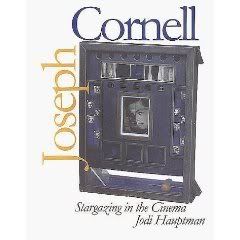The church follows three basic ideas including:
1. God is divine Love, Father-Mother, supreme.
The idea of a god that is both male and female incorporate likely appealed to Cornell for several reasons. Cornell was a man who was primarily interested in activities that, during his lifetime, were usually ascribed to women. Collecting, collage, and assemblage were activities that were popular for ladies during the Victorian era. It also may be important to note that Christian Science is one of the only major religions to be founded by a female. A female dominated world would make sense to a man whose life was controlled in many ways by his mother.
Cornell referred to certain women as his female doubles. He often formed attachments to actresses who either had an element of androgyny to their looks or personalities, or who played somewhat androgynous roles in films. Hedy Lamarr, for example appeared in a film wearing pants. Inspired by this image, Cornell developed an entire fantasy that involved Lamarr dressed in turn of the century men's clothing and riding a bicycle. Cornell was also enchanted with Lauren Bacall, who despite being the ultimate sex symbol in her first film, To Have and Have Not, exhibited certain masculine qualities such as a deep voice and the nickname, Slim.
Cornell's art often included androgynous imagery. His Medici boxes showing young, Renaissance era boys and girls whose genders are difficult to determine. He also created a portrait of his friend Lee Miller in which two identical images of Miller's face show her in a dress in the foreground and in a suit behind. Lee Miller also made a gender bending portrait of Cornell which shows a boat with a mast of long hair that appears to come off of his head.
 TO BE CONTINUED...
TO BE CONTINUED...Sources:
- Utopia Parkway: The Life and Work of Joseph Cornell by Deborah Solomon
- Joseph Cornell: Gifts of Desire by Dickran Tashjian
- Joseph Cornell's Vision of Spiritual Order by Lindsay Blair
- Science and Health by Mary Baker Eddy
- The Church of Christ, Scientist website - http://www.tfccs.com
- The Bible - http://biblegateway.com











